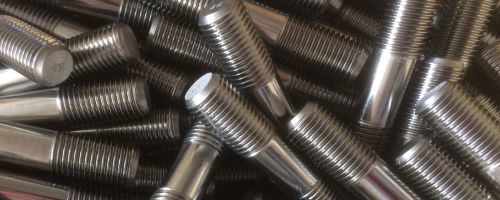Stainless Steel 304 Bolt VS Stainless Steel 316 Bolt
Stainless Steel 304 Bolts
The chemical structure of 304 stainless steel gives rise to its other common name, 18-8. Grade 304 Stainless Steel composition comprises 18% Chromium and 8% Nickel, among other elements (18-8). The bolts are available in various grades, including 302, 302HQ, 303, and 305. This is used to classify a broad range of traits that may be classified according to their well-defined chemical compositions. Bolt series are ideally made out of stainless steel 304. To different degrees, different materials in the second grade can resist corrosion. Stainless steel 304 grade is resistant to a wide range of environments and chemicals because of its unique composition. Most of the time, these bolts won't rust since they aren't magnetic. Thanks to the cool-work procedure, the high-quality raw materials used result in a more compact final product.
Bolts made from SS 304 have certain mechanical and physical characteristics.
The stainless steel 304 bolt has an excellent density (8 g/cm3), melting point (1450C), and flexibility (193 GPA). Furthermore, the bolts are both electrically resistant and conducive. These bolts are thermal expansion indicators when kept at room temperature. The tension evidenced by the growing process indicates that working with Stainless Steel 304 Bolts is a tough experience. Osteal stainless steel has excellent formability and weldability, and they also indicate durability and robustness against corrosion.
Advantages of Stainless Steel 304 Bolt
The corrosion resistance of bolts made of 304 stainless steel is exceptionally excellent. Because of this, these fasteners may be used with little difficulty in numerous ionic and silica solutions and alkaline solutions. The material may be formed at both cold and high temperatures, making it useful in various settings.
stainless steel 316 bolts
Distinct from 304 stainless steel, 316 is a higher quality metal.
Tensile strength (580 MPA), expansion (50 per cent), flexibility (193 GPA), charpi impact (105 J), and the Ezod effect are only some of the remarkable mechanical qualities of the product (129 J). Bolts made of stainless steel 316 reveal the material's mechanical qualities, electrical resistance, and magnetic permeability.
Baseline
The presence of molybdenum in 316 Stainless Steel Bolt is the primary distinction between 304 and 316 steel fasteners. Stainless steel grades 316 and 304 differ primarily in the proportion of nickel to chromium. Due to their additional characteristics, bolts made from stainless steel 316 are more costly than those made from stainless steel 304. Additionally, bolts made of 316 stainless steel have found application in the salt industry..jpg)


Comments
Post a Comment